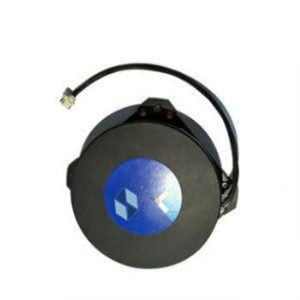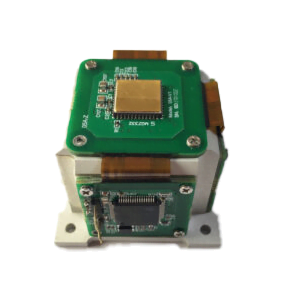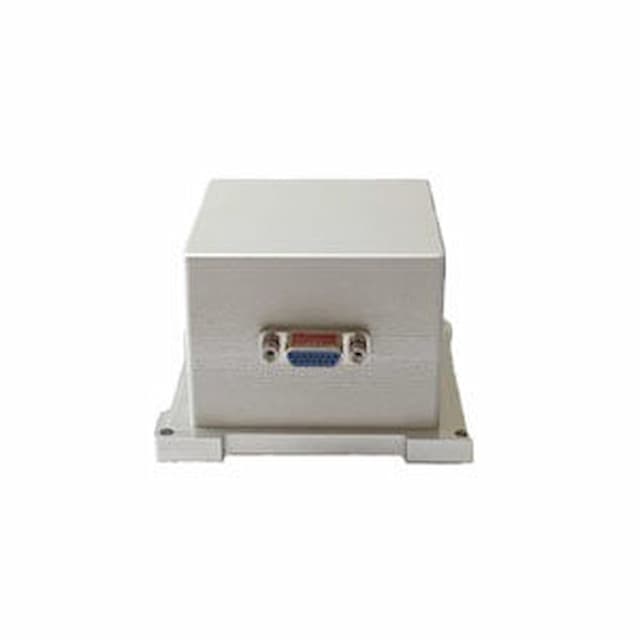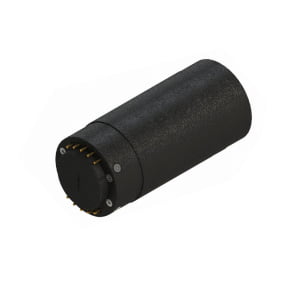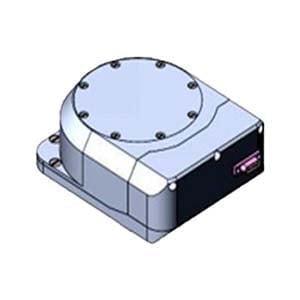The Fiber Optic Gyroscope (FOG) is a type of gyroscope that uses the interference effect of optical fibers for measurement. It consists of a light source, optical fiber transmission system, detection system and signal processing system. The light emitted by the light source is transmitted to the detection system through the fiber, and the rotation angular speed of the gyroscope is calculated by measuring the interference effect of the light.
The fiber optic gyroscope can sense the change of direction, so it can realize the function of the traditional mechanical gyroscope. FOG was first proposed by Vali and Shortill in 1976. Fiber optic gyroscope provides very accurate rotation information, it is not sensitive to inter-axis vibration, acceleration and shock, compared with traditional inertial spin gyroscope, FOG can measure the rotation state without moving parts, independent of movement inertia, reliable performance, so FOG is used in high-performance aerospace applications.
Optical fiber gyroscope includes optical fiber ring, light source, light detector and signal processing system. Among them, the fiber ring is the key component of the FOG, consisting of a section of fiber arranged in a ring. The light emitted by the light source is divided into two beams by the beam splitter, which propagate through the two directions of the optical fiber ring respectively. When the beam propagation is affected by rotation, the phase difference between the two beams will change, and the phase difference is related to the rotation speed and direction of the optical fiber ring. Finally, the light detector recombines the two beams and detects the phase difference change, obtaining information about the rotation speed and direction through the signal processing system. FOG is based on Sagnac theory and interference theory.
The main idea of Sagnac's theory is that when a light beam travels in a toroidal channel, if the toroidal channel itself has a rotational velocity, it takes longer for the light to travel in the direction of the channel rotation than it does to rotate along the channel, and more time to rotate in the opposite direction of the channel.
When the ring path rotates, the optical path of the ring path changes relative to the optical path of the stationary loop in different directions. Using this change in the optical path, if there is interference between the light propagating in different directions to measure the speed of the loop, an interferometric FOG can be made. If this change in the loop optical path is used to realize the interference between the continuous circulating light in the loop, that is, by adjusting the resonance frequency of the light in the fiber loop, and then measuring the speed of the loop, a resonant fiber gyroscope can be manufactured.
FOG is an improved model of laser gyroscope. Due to the use of optical fiber (optical fiber wrapped in a circle), the total optical path is greatly increased, so that the optical path difference during rotation is also greatly increased, and the detection accuracy is improved. Ericco provides low cost and high performance FOG ER-FOG-60, which is an important angular rate sensor with long life, fast start-up, high precision, low power consumption and wide dynamic range. It plays an important role in aerospace, weapon navigation, platform stabilizers, drones and other fields.
The key to the production of FOG is to connect the two ends of an optical fiber wound into multiple loops to a Michelson interferometer. In order to ensure the stable and reliable operation of the system, the optical fiber and the interferometer are usually made into a whole.
Fiber Optic Gyroscopes use coils of fiber optics, along with coherent laser light to detect rotational motion. Due to the Sagnac Effect rotation of the coils sets up a standaning wave pattern, which (in the right configuration) modulates the intensity of the light beam measured.
Hope this article can let you have a certain understanding of fiber optic gyroscope. If you are interested in fiber optic gyroscopes related products and articles, please read the related products and related articles below.
More Technical Questions
1. Operation of a Fiber Optic Gyroscope
2. Specifications and Features of Fiber Optic Gyroscopes
3. Application of Fiber Optic Gyroscope in North Seeking System
4. Application of Fiber Optic Gyroscope
5. Application of Fiber Optic Gyroscope North Finder
6. Fiber Optic Gyroscope Development Trend
Products in Article
